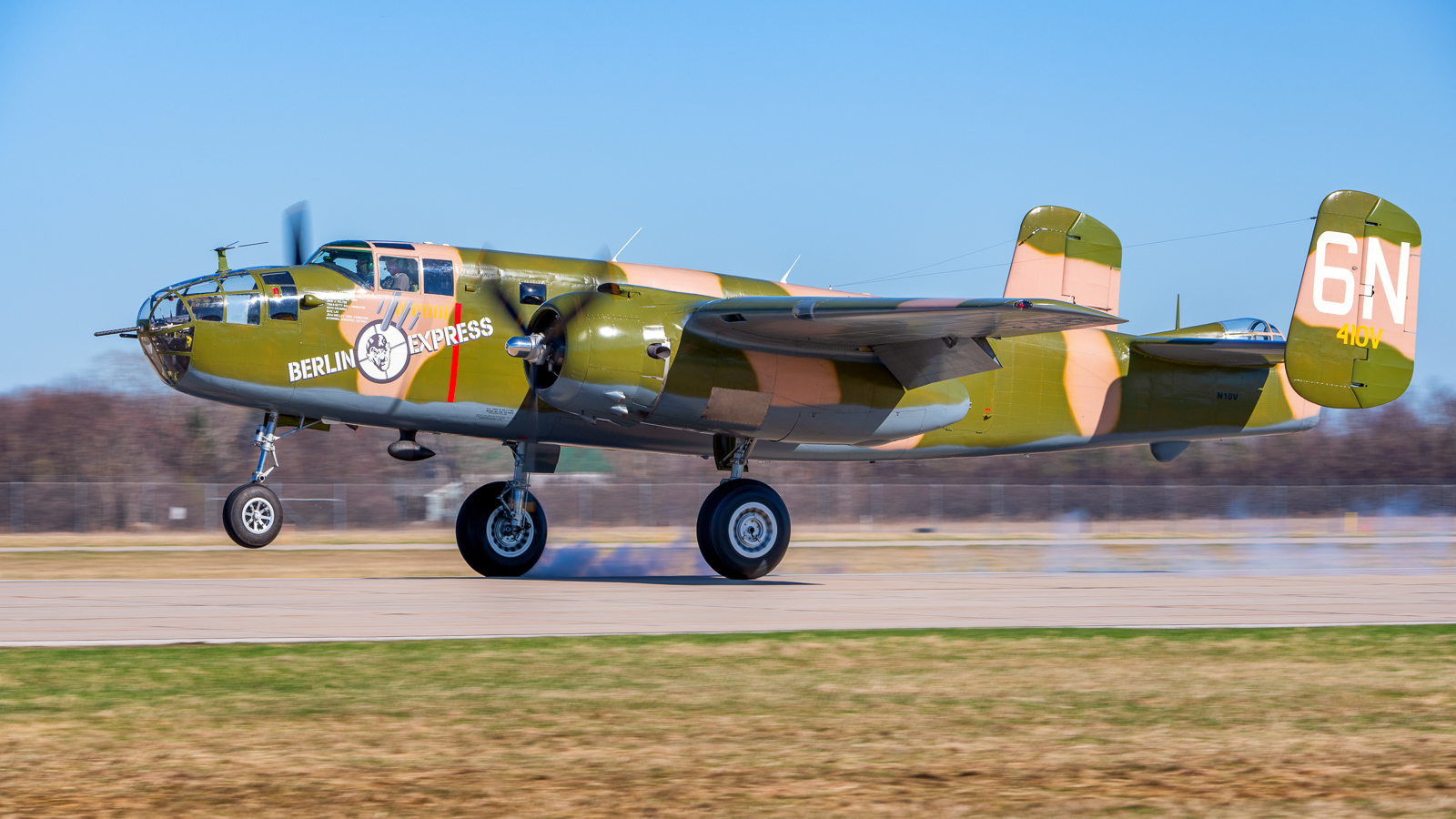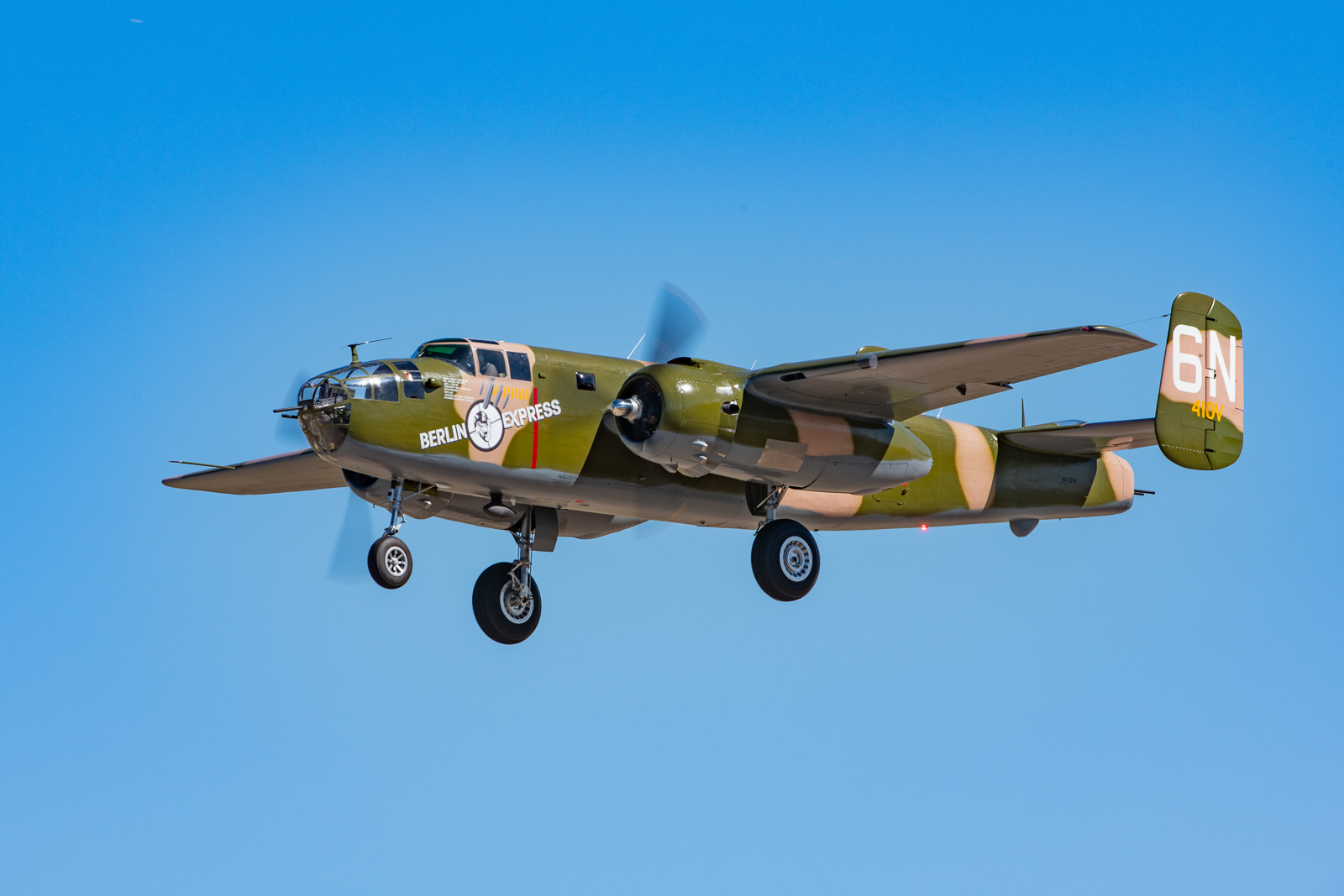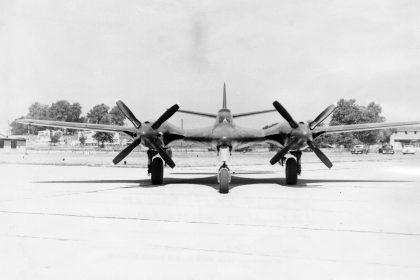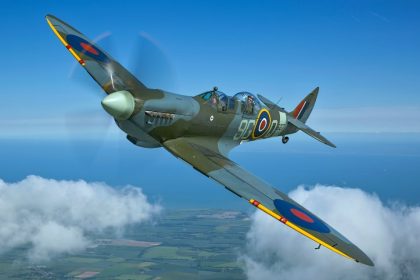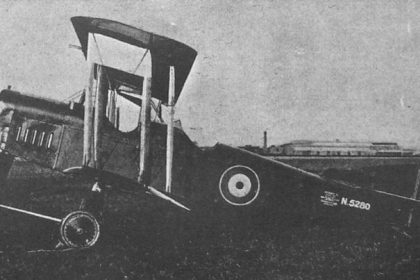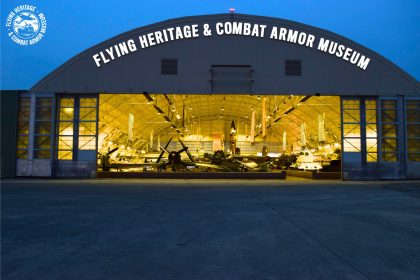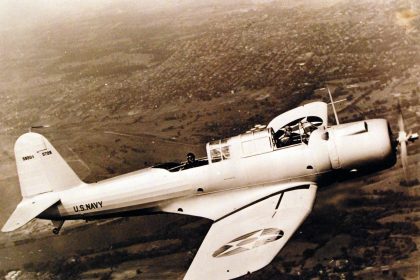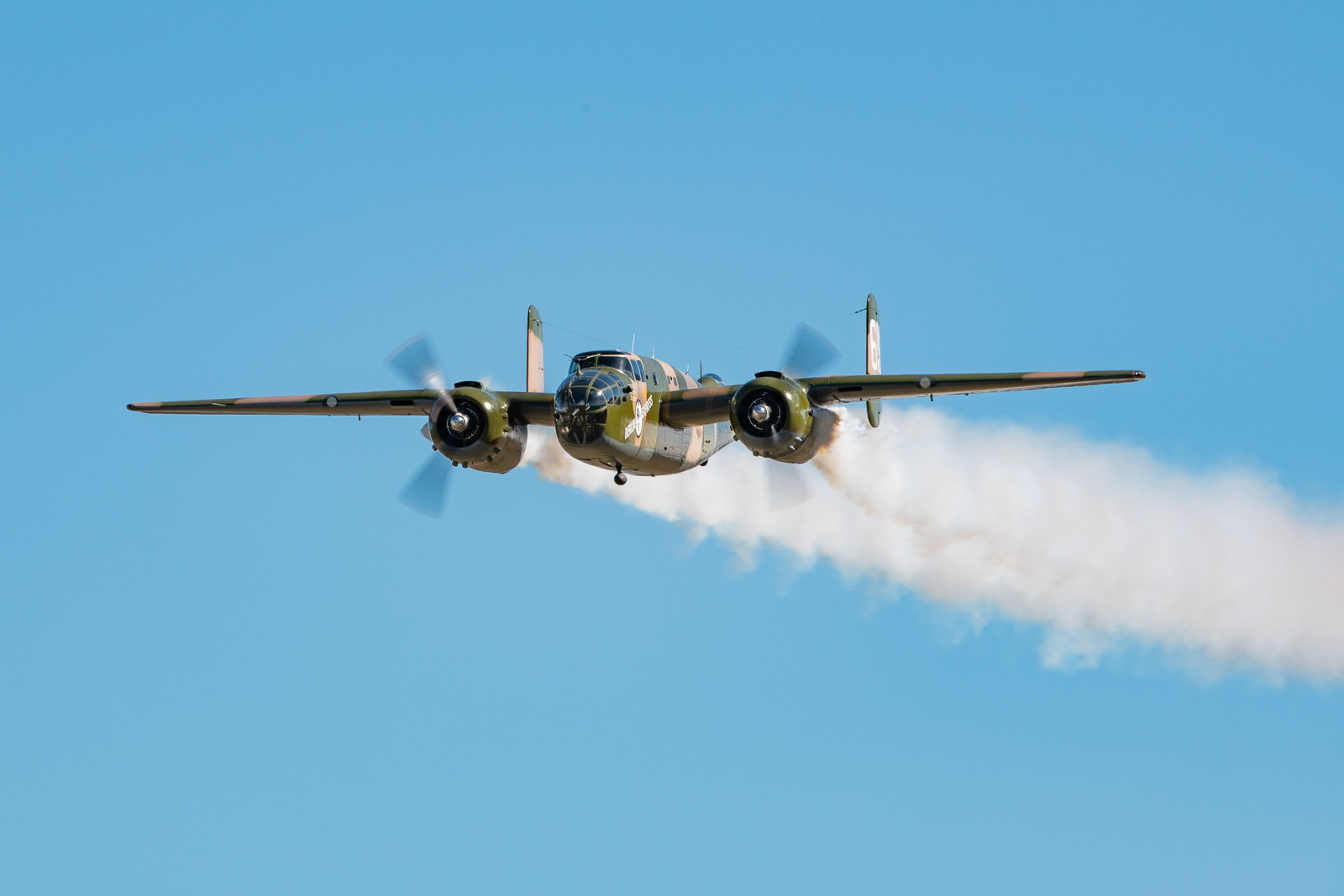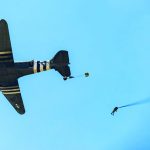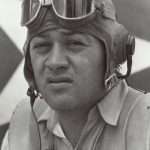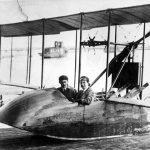Following an in-depth, nearly five year restoration effort, the Experimental Aircraft Association’s rare H-model B-25 Mitchell medium bomber took to the skies again on April 20th in Oshkosh, Wisconsin. The aircraft, USAAF serial 43-4432, is painted up as Berlin Express; fictitious markings it wore when taking part in the 1970 film of Joseph Heller’s marvelous novel, Catch-22.
Sadly the aircraft lost its distinctive solid nose which housed four .50 caliber machine guns and a 75mm cannon during modifications in the early 1950s and currently sports the glazed bomber nose from a B-25J instead. However, there is no getting over its rarity, with just a handful of B-25H Mitchells still in existence. While the aircraft never went overseas for combat operations, it has had an interesting civilian history – as outlined by on Joe Baugher’s terrific website as follows…
“[She was] taken on strength on Dec 28, 1943 and flown to the modification center at Fairfax Army Air Field, KS, for two months of work. From early February through the end of March 1945 the plane traveled back and forth as an administrative aircraft between the modification center at Fairfax and several other bases, and then it was assigned to Lowry Army Air Field in Denver, CO. From then on until it was retired, the plane was assigned to several bases in Washington and California, returning to Fairfax twice in late 1944. On Nov 1, 1945 the plane was sent to Altus Army Air Field, OK, for storage, and in 1946 was turned over to the Reconstruction Finance Corporation at Altus. The plane was sold to Joe Zappa/Delta Drilling Co. of Dallas, TX on Jun 25, 1947 and registered N90399. It was then passed through three other owners before being purchased in February 1952 by Mechanical Productions, Inc, of Jackson, MI, who registered it as N10V. In September 1952 the cannon nose was replaced by a standard B-25J 8-gun nose, and a couple months later low drag wingtips were installed. In October 1955 it was sold to Husky Oil Co. of Cody, WY, and several executive modifications were made, including the installation of an air stair and pointed tail cone. After five more owners the plane was acquired by Tallmantz Aviation of Orange County, CA, in September 1968, and then sold to Filmways Inc of Hollywood, CA who used it in the 1970 movie, “Catch-22.” Registration N410V was a film serial, presumably mistaken for a US registration. In May 1971 it was sold to Sherman Cooper of Merced, CA, and one year later he donated the plane to the EAA Aviation Foundation of Oshkosh, WI. From 1975 to 1985 the plane went through a complete restoration and a standard B-25J glass nose was installed. Now with Experimental Aircraft Association of Oshkosh, WI as N10V.”
The aircraft will now join the EAA’s B-17G 44-85740, Aluminum Overcast, as she barnstorms across the country giving aerial demonstrations and flight experiences to the public as part of the EAA’s Living History outreach program. Commenting on the recent first flight, the EAA’s vice president of advocacy and safety noted, “There’s no question that flying this airplane, getting it airborne again and sharing it out on the road will inspire thousands of people. It tells a story that only EAA can tell in this very special way, and you can’t get that from reading a book; you can’t get that from watching a program on television.”
It is terrific to see this magnificent aircraft back in the air again, and hearty congratulations are due to all whom made it possible! Many thanks also to Sam Oleson, Connor Madison and Jim Busha, all at the EAA, for providing use with the details and marvelous images for this story!







